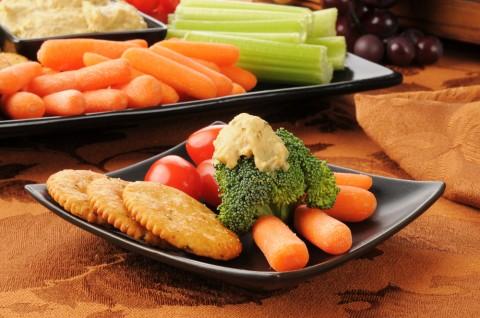How many people in midlife can fit into their wedding clothes? Not too many, because predictably, most have exchanged muscle tissue for body fat and more pounds. Now, a report from Johns Hopkins University claims there are proven ways to limit and even reverse weight gain in both sexes.
Women, as they head into menopause, along with decreased activity, develop what’s been labeled the “Menopot.” With lowered estrogen, testosterone begins to transfer fat from the hips and other areas to the belly. It’s not just a cosmetic problem, but one that can increase the risk of Type 2 diabetes and cardiovascular problems.

A good choice is baby carrots, celery, low-fat yogurt, low-fat cheese, and small whole-grain crackers. Shutterstock*





